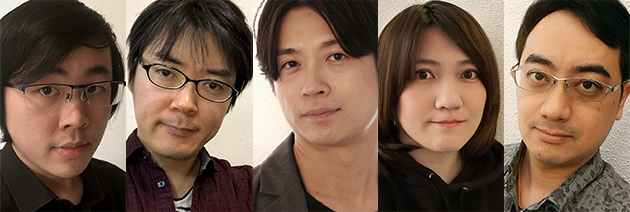
The Making of CODE VEIN (Part 1) presents stories from the project’s very beginnings to its early phases of development, offering a peek into the creation of the drama-laced action-adventure RPG that received global acclaim.
Participants were interviewed in an online discussion over Zoom. (Held January 2021.)
CODE VEIN’s Development Staff
| Hiroshi Yoshimura | Game Designer/CODE VEIN Director, Development Producer |
|---|---|
| Yuichi Yoda | Game Designer/CODE VEIN Director, primarily Action Supervisor |
| Koichi Itakura | Artist/CODE VEIN Art Director, Dungeon Building Supervisor |
| Kurumi Kobayashi | Artist/CODE VEIN Character Designer, also initial Art Director |
| Dun Mao | Game Designer/CODE VEIN Planner, Game Balance, Localization, and Global Communication Supervisor |
Our eleventh Development Episode offers behind-the-scenes stories from inside BANDAI NAMCO Studio about the creation of the drama-laced action-adventure RPG CODE VEIN, which was released in September 2019 on PlayStation®4 (*1), Xbox One (*2) and Steam®(*3).
Leading this interview is CODE VEIN’s Development Producer, Hiroshi Yoshimura.
Looking Back on the Past Year
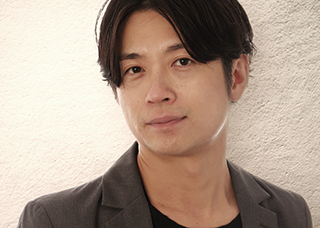
●Hiroshi Yoshimura
Game Designer/CODE VEIN Director, Development Producer
■Yoshimura: It’s been over a year since CODE VEIN was released, and players all over the world continue to enjoy the game. Could each of you share your thoughts, looking back on this title’s development?
●Yoda: I keep an eye on the Twitter hashtag for the game, and often see people using the character customizer even to this day. Players who feel attached to their characters tend to engage with the game at an even deeper level, and I appreciate how much this title’s art captivates its audience.
I also noticed the impact made by implementing Photo Mode, which lets players capture scenes from within the game. I’m very thankful to see all of the pictures people take in-game.
●Itakura: At the start of development, we were worried about whether we could meet the technical requirements required to put the game on the market, but a lot of players enjoyed the game, resulting in a smash hit that sold over a million copies. I think this shows how much progress we made when developing this title.
●Kobayashi: I also noticed that people continue to post a lot of pictures from the character customizer, even a year after launch. During the period around CODE VEIN’s release, I saw a lot of people using it to recreate their favorite characters from series that were popular at that time, but nowadays I see characters from more recent games, or from series that came out after this game’s release. It’s fun to see how things change over time.
■Yoshimura: And the game continues to change precisely because we have a gradual influx of new players.
●Kobayashi: I was also surprised when I heard how many copies the game sold. A lot of people enjoy our character customizer, but I was also surprised by how many fans abroad play the game. At the beginning of development I thought the game only targeted the Japanese market, that it was simply an extension of the GOD EATER series. But it’s very obvious that this title attained a worldwide audience, not just a Japanese one.
■Yoshimura: Mao-kun, what do you think?
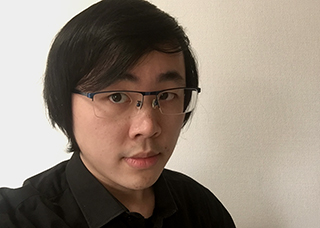
●Dun Mao
Game Designer/CODE VEIN Planner
Game Balance, Localization, and Global Communication Supervisor
●Mao: I joined CODE VEIN during the latter half of its development, but saw trailers for it before I joined BANDAI NAMCO Studio (henceforth BNS) and thought it looked like a fascinating game, so I was very excited to be a part of the development team.
CODE VEIN is unique among recent games using higher difficulty as a core component. I even saw several international YouTubers that I keep an eye on streaming it, which made me appreciate being a part of the project that much more.
●Itakura: The response from international fans exceeded our expectations, and it’s humbling to see how much our game has achieved.
■Yoshimura: I’m also very grateful to see our fan base continue to grow a year after the game’s release. And thanks to our fans, we get invited to talk about the game in interviews like this one!
The Story Leading Up to Development
■Yoshimura: Three of the people who started Project CODE VEIN are here today: myself, Kobayashi and Yoda. We started the project to give another shot at making something new alongside the company that we partnered with to launch GOD EATER, SHIFT Inc.
●Yoda: That brings back a lot of memories.
■Yoshimura: After launching GOD EATER, which a lot of fans enjoyed over a long period of time, one of the driving forces while planning this game was our team’s feeling that the next step should be to create a game that is well received both in Japan and internationally.
At the same time, because the gaming industry evolves so quickly, we were afraid that just maintaining the status quo would mean we would be left behind.
●Yoda: We felt the need to test ourselves by creating a totally new game.
■Yoshimura: The project started about six years ago. The game’s scope ended up way larger than the estimate we made in March 2015… (Laughs) Right around the latter half of the development of GOD EATER 2 RAGE BURST, I started hammering out the concept for our next undertaking; a completely new game IP.
At that point the studio was focused less on creating new IPs and more on growing our existing series. So instead of creating a new IP completely from scratch, the project was started as a “new title made by the GOD EATER team”.
We then started to think about how the team could compete on the international stage, and the first thing we did was to brainstorm a list of our team’s fortes, which we boiled down to their key components. We then discussed what genre would make the best use of these points. We concluded that one of our primary strengths is our characters; that the player can become the main character.
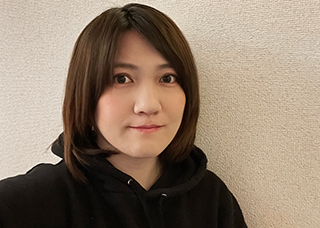
●Kurumi Kobayashi
Artist/CODE VEIN Character Designer, also initial Art Director
●Kobayashi: That’s why we decided to include character customization. It was a staple feature in the GOD EATER series, and our conviction that there are players around the world looking for features like this resulted in us identifying this feature as one of our strengths.
We also thought that character companions were another one of our strong points.
■Yoshimura: Yet another one of our strong points is creating action combat that felt right. These three strengths became the starting point from which we decided to test ourselves by making a brutally-difficult action-adventure RPG.
●Kobayashi: When we first started thinking about what sort of game world we wanted to create, the very first thing we discussed was wanting to include vampires, and also wanting gangs. We did our best to stick to these two themes throughout the game.
■Yoshimura: Exactly. GOD EATER is set in a world ravaged by Aragami, but we wanted to take the dystopian setting in a different direction with this game. I suggested combining dark, beguiling vampire characters with a harrowed future, and Kobayashi-san came up with this piece.
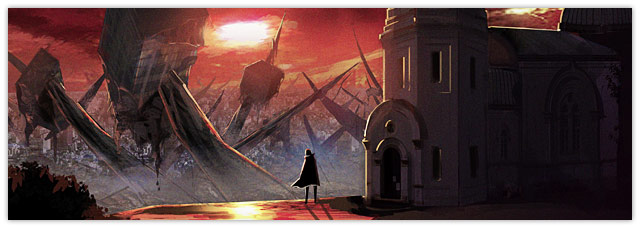
ⒸBANDAI NAMCO Entertainment Inc.
●Kobayashi: That I did.
■Yoshimura: Next were the gangs. We imagined gangs of vampires illicitly residing in abandoned buildings. But we didn’t want to make the game too bleak, so we thought about ways to show them enjoying themselves.
●Kobayashi: I didn’t think about how the in-game models would look went I drew this, so it ended up very homely and visually dense. (Laughs)
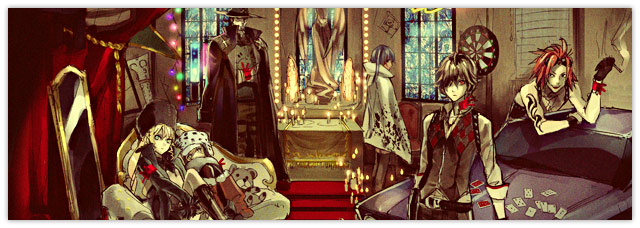
ⒸBANDAI NAMCO Entertainment Inc.
■Yoshimura: The characters look completely different in these rough drawings compared to the final models that were used in-game.
The first major phase of development was the first evaluation build, and we mostly experimented with the game’s visuals.
We had to make a decision about which game engine to use, and came to the conclusion that we need to surpass anything that’s been done in the past in order to compete internationally. We ended up picking Unreal® Engine(*4) and began racking our brains over a new art style for the game.
●Kobayashi: When I was working on illustrations, I didn’t fully grasp how realistic and immersive they would look when placed in Unreal® Engine. When everything was finished, I was blown away by how convincing everything looked.
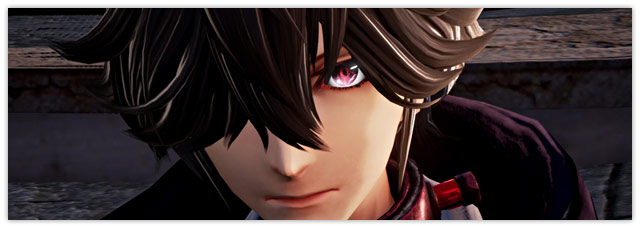
ⒸBANDAI NAMCO Entertainment Inc.
●Itakura: (Looking at the above image) This must have been from when Louis still had a choker. (Laughs)
■Yoshimura: It was right around that point in time that Kaito Ishikawa took the role of Louis.
●Yoda: The visuals really changed completely.
■Yoshimura: At this point the art was still very sparse in terms of both content and quantity; the game was very much still a prototype.
What you see at this point are the results of just more than a half year’s work. You can also see that we were still trying to decide if we should take the visuals in a realistic or anime direction.
The version of CODE VEIN that hit the markets was based on what we created after this, the second evaluation build. After toiling away on the first evaluation build, we came up with a fascinating world and beguiling characters. So when creating the second evaluation build, the task in front of us was to figure out how to create the game using the most advanced techniques available at that time.
■Yoshimura: Does anyone have anything they want to add about the tech from back then?
●Itakura: As you mentioned earlier, CODE VEIN was created using Unreal® Engine 4. We planned on making massive, highly interactive dungeons, and picked this engine thinking that it could handle those requirements.
However, its standard features all tend to veer towards photorealism, so we had to adjust the engine and tweak the shaders in order to accomplish the slightly more anime-esque, illustrated look that we wanted for our characters. In that sense, we used the second evaluation build’s development as a chance for us to experiment while getting used to a new workflow using Unreal® Engine.
■Yoshimura: But figuring out how to create all of the assets we still had to make was a big obstacle, and we were constantly trying to figure out how to take them on.
We had to challenge ourselves with taking a modern approach to development, which included creating the correct workflows for the project.
●Yoda: Going back to the visuals, we originally used Unity(*5) to test Mia. Accomplishing that look in Unreal® Engine took some real elbow grease.
Tackling the Second Evaluation Build
■Yoshimura: Next, let’s talk about the real start of CODE VEIN’s development, the second evaluation build.
Bringing the game’s compelling concept to life through the character art was a huge undertaking for us, wasn’t it?
●Kobayashi: Compared to the primary evaluation copy, I think the characters ended up with a more hand-drawn appearance, giving them a more distinct look. Before we proceeded to work on them, I told the whole team that that’s what I wanted to set as a goal. We also paid a lot of attention to making characters blend into the environments, to creating effects, and to adding moving parts to the Blood Veils. Considering how best to combine each element to make the characters look as good as they can was really tough.
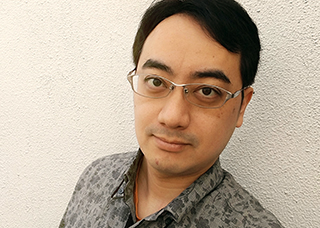
●Koichi Itakura
Artist/CODE VEIN Art Director, Dungeon Building Supervisor
●Itakura: One of our tasks continuing from the first evaluation build was creating a distinct look for our game. Just using the standard features in Unreal® Engine tended to give us a photorealistic look, but taking that route would leave little to distinguish our games from others.
We wanted to make the best use of our team’s fortes, and so we looked for ways to use the anime-esque, illustrated designs that we developed in GOD EATER.
■Yoshimura: We even considered using something like a toon shader.
●Itakura: We did. Toon shading separates lit and shadow areas, but we also wanted to use an immersive photorealistic style for the environments. Doing so caused more problems, like characters’ skin color not matching the environments, or characters standing out too much. We had a lot of trouble making all of the visual elements in the game come together.
■Yoshimura: It was at this point that we received a suggestion from flightUNIT, the company that modelled our characters. Their idea was to strike a balance by using 2D shadows on characters’ hair or under their chins, and tone down the 3D shading on their skin.
●Itakura: Exactly. But just doing that would leave little variation on screen, and the characters would not blend into the environments well, so we tried adding strong rim lighting to both the characters and environments to make the visuals more coherent.
■Yoshimura: While our overarching goal was to pursue an anime-esque, illustrated look, we also decided to pack the screen with more visual information than you normally find in that style.
I was particularly meticulous about the amount of visual information that’s present on characters’ body parts that are in shadow. We kept lit surfaces simple, but brought attention to the materials or shapes of body parts in shadow.
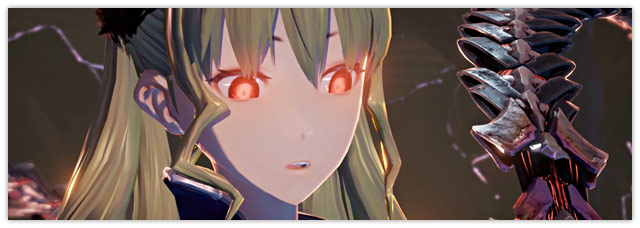
ⒸBANDAI NAMCO Entertainment Inc.
■Yoshimura: It’s fascinating to look at the game now. (Laughs) We used an anime style for the characters, but the Blood Veils and backgrounds look realistic. By trying to take the best parts of anime and realistic styles, we ended up with this look. It took about half a year to reach the stage you see here.
●Itakura: We must’ve worked on the second evaluation build for about a half year. We started in January 2016 and worked until May.
■Yoshimura: We received good feedback for the characters’ visuals in the second evaluation build, and a lot of our colleagues even began to cheer on our team.
I’m not exaggerating when I say that CODE VEIN saw the light of day because of how well Mia, who at that time we referred to as “the ushanka girl,” turned out. She earned us the development budget for the game, so we think of her as something like the game’s savior. (Laughs)
Dungeon Building
■Yoshimura: So far we talked about how we planned out the characters. However, once we started making the actual game, the part that we struggled with the most was creating dungeons for players to explore.
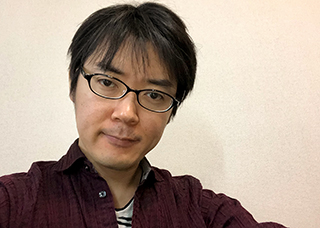
●Yuichi Yoda
Game Designer/CODE VEIN Director, primarily Action Supervisor
●Yoda: We ran into trouble right off the bat after we created a workflow and started creating assets. The workflow was to create dungeons using simple box-shaped assets, and once the dungeon started to come together, convert to finalized assets to flesh things out. But once we tried replacing the boxes with the final assets, we often found that the look of the dungeon changed even more than we had expected, and as a result game didn’t play the same. Even after setting up workflows and rules for development, many things didn’t go as expected, which was a big problem for us.
■Yoshimura: It was a lot easier to make each location play differently in GOD EATER’s maps.
In GOD EATER, it was enough to assign clear roles (areas where players fight Aragami, areas for passageways, etc.) to locations and make them according to these roles.
However, CODE VEIN is an action-adventure RPG, and one of the game’s key elements is level design that establishes expectations and leads the player along a specific emotional arc. Because of this, we weren’t able to separate gameplay elements using simple roles.
●Yoda: We also had to orchestrate all phases of development, which meant coordinating game designers, level designers, visual artists, and engineers, amongst other staff.
■Yoshimura: And we started development with almost no knowledge about how to make modern game design work. Figuring that out was absolutely vital to the project.
●Yoda: Itakura-san, what was your experience with building dungeons in this game?
●Itakura: The entire team started with next to no experience with dungeon building, so we were constantly worrying about how to make dungeons that are worth playing through, how to fit visuals in them, and whether everything is being made properly.
We started the second evaluation build by testing workflows for dungeon building, but…
■Yoshimura: We had one big setback, didn’t we? (Laughs)
●Itakura: One of the dungeons we were trying to make may have been too out-there, but the workflow for the dungeon just did not work out at all… We ended up being saved by the testing that we conducted simultaneously. Nagata-san, who is now with NAMCO Studios Malaysia, had the idea to create tech that meshed together asset creation with the rough, blocked-out assets. We worked on developing that in parallel to the game. At the time we were working on an area similar to the Ruined City Underground. We only just managed to finish the area in time for the second evaluation build’s presentation, but it was a fairly large hurdle for us to pass.
■Yoshimura: That was something that GOD EATER’s development team didn’t know how to do, so we ended up borrowing staff from other projects, or other BNS staff that have a professional understanding of Unreal® Engine, and had them help out with the development of CODE VEIN.
We were lucky enough to get help from a wide variety of people, including staff at SHIFT Inc. and ILCA Inc.
NEXT>>> Making of CODE VEIN (Part 2)
Official Site
https://www.code-vein.com/
Publisher: BANDAI NAMCO Entertainment
BANDAI NAMCO Entertainment Inc.
The names of companies and products mentioned herein are trademarks or registered trademarks of their respective owners.
(*1) “PlayStation” is a registered trademark or a trademark of Sony Interactive Entertainment Inc.
(*2) Xbox One is a registered trademark or trademark of Microsoft Corporation and/or its affiliated companies.
(*3) ©2019 Valve Corporation. Steam and the Steam logo are trademarks or registered trademarks of Valve Corporation in the United States and/or other countries.
(*4) Unreal® is a trademark or registered trademark of Epic Games, Inc. in the United States of America and elsewhere. Unreal® Engine, Copyright 1998–2019, Epic Games, Inc. All rights reserved.
(*5) This website is not sponsored by or affiliated with Unity Technologies, Inc. or any of its affiliates, and is not affiliated with Unity Technologies, Inc. or any of its affiliates. “Unity” is a trademark or registered trademark of Unity Technologies or its affiliates in the United States and other countries.
「CODE VEIN™」
©BANDAI NAMCO Entertainment Inc.




